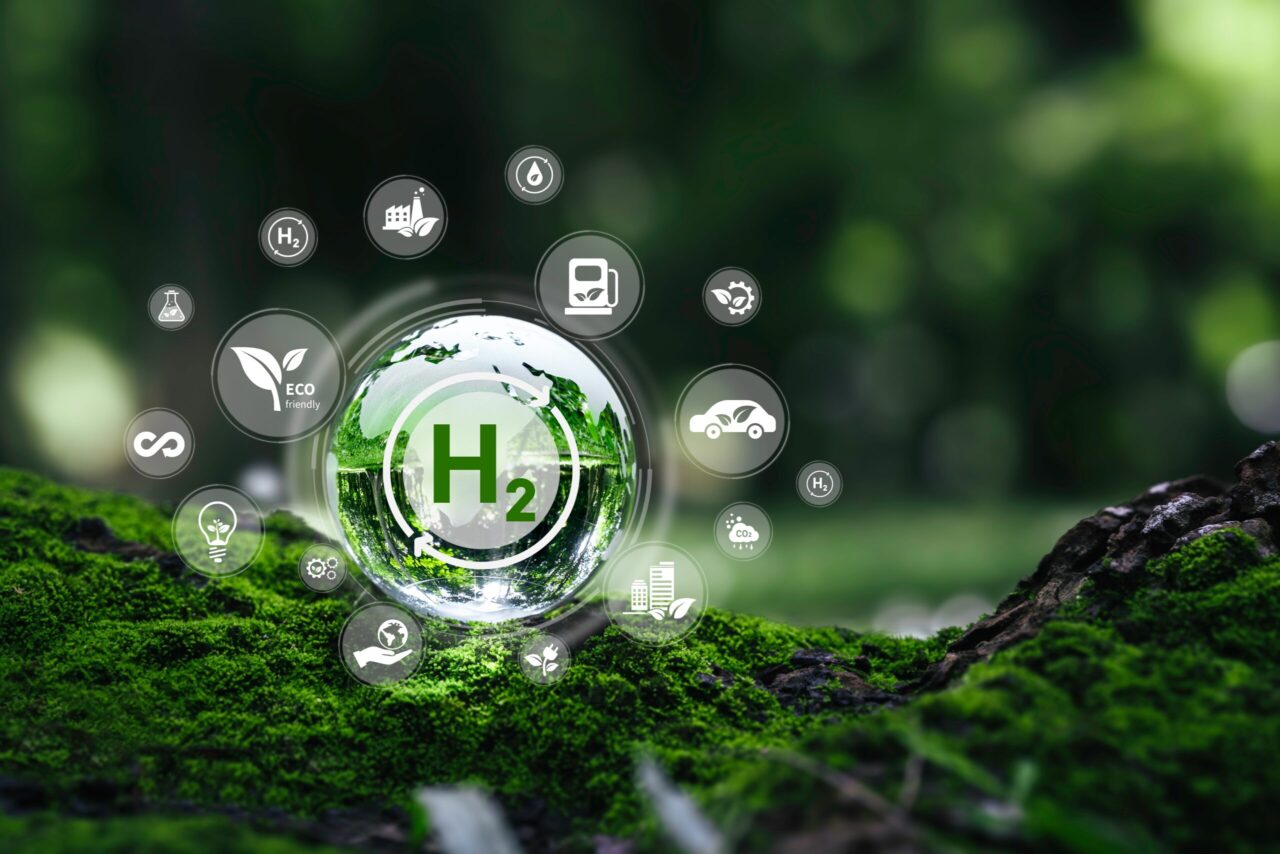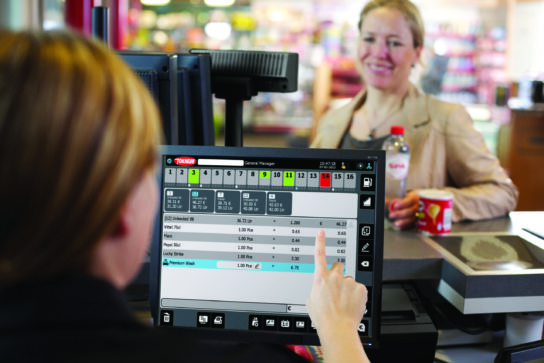How Hydrogen and Biogas Will Power Net Zero in Ireland
A deep dive into how alternative gases power the next generation of transport
As Ireland accelerates towards its net-zero ambitions, the transport sector finds itself at a pivotal moment. Electrification has dominated the conversation, but it is not the only route to decarbonisation. Hydrogen and biogas are emerging as powerful allies in the clean energy transition, offering viable alternatives to fossil fuels for sectors where battery power may fall short. This article explores how these gases are driving change and how TSG Ireland is contributing to the infrastructure needed to support them.
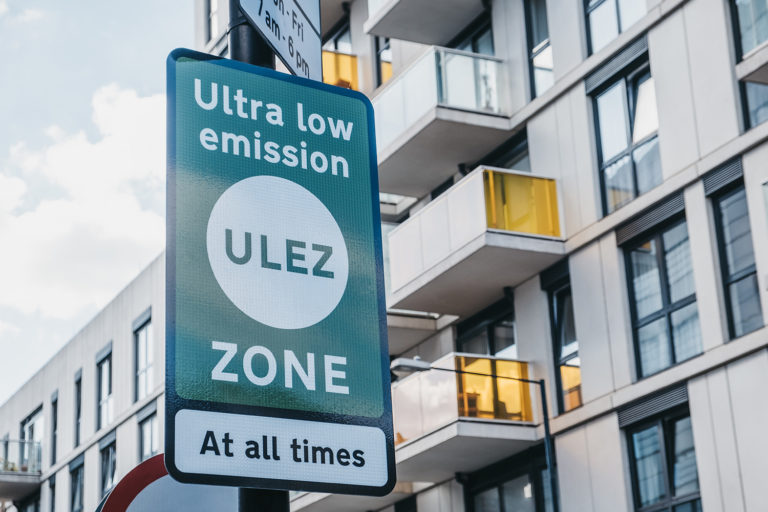
The Pressure to Decarbonise Transport
Fleet operators and logistics providers are under increasing pressure to reduce emissions. While Ireland does not currently operate formal Clean Air Zones (CAZs) or Low Emission Zones (LEZs), access restrictions are in place for heavy goods vehicles (HGVs) in Dublin*, and EU directives govern broader air quality regulations. These frameworks are expected to evolve, prompting businesses to reassess fleet strategies in anticipation of future compliance requirements.
*Source: Urban Access Regulations
Electric vehicles (EVs) are increasingly viable for urban logistics and light-duty applications. However, long-haul and high-utilisation fleets may benefit from a broader mix of technologies. This is where alternative gases such as hydrogen and biogas come into play, offering complementary solutions tailored to specific operational needs.
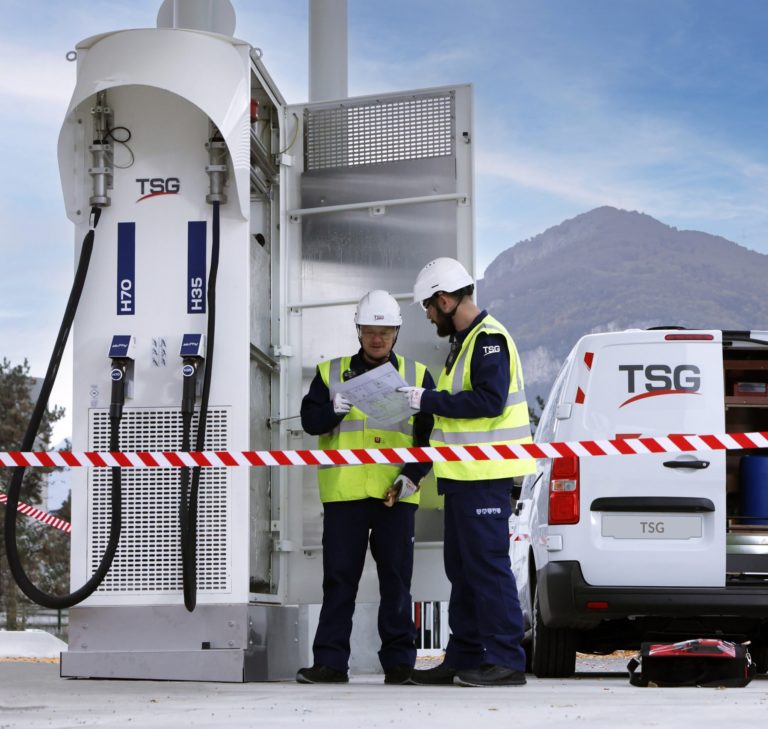
Hydrogen: Clean Power with Long-Range Potential
Hydrogen is an energy carrier, and its environmental impact depends on how it is produced. Ireland’s National Hydrogen Strategy†, published in July 2023, prioritises the development of green hydrogen, produced via electrolysis using renewable electricity, as a cornerstone of its zero-carbon economy. The strategy outlines 21 actions to scale up production, remove barriers, and prepare for the export of hydrogen.
†Source: Gov.ie
Fuel cell electric vehicles (FCEVs) generate electricity on demand through a chemical reaction between hydrogen and oxygen, emitting only water vapour. This makes them particularly attractive for HGVs, buses and other high-mileage applications. Refuelling takes minutes, and driving ranges often exceed 480 km, with some models expected to reach over 1,000 km before the end of the decade.
Hydrogen Highways and Infrastructure Investment
The concept of Hydrogen Corridors, dedicated routes equipped with refuelling infrastructure, is beginning to take shape across Ireland. A major milestone was reached with the Shared Island Initiative◊, which published feasibility studies for a Green Hydrogen Refuelling Corridor between Dublin and Belfast. The reports confirmed that the legislative framework, supply chain maturity and economic case are strong enough to support a commercial pilot. Preferred locations have been identified in both cities, and Phase III will develop a business case and procurement strategy for two demonstrator hydrogen refuelling stations (HRS) along the corridor.
◊Source: Gov.ie
This initiative aligns with the EU’s Alternative Fuels Infrastructure Regulation# (AFIR), which mandates minimum hydrogen infrastructure across member states by 2030. Ireland is expected to host 5–6 publicly accessible Hydrogen Refuelling Stations (HRS) in key urban centres, including Dublin, Cork, Limerick, Galway and along the Trans-European Transport Network (TEN-T) core network.
#Source: AFIR
In parallel, Ireland is also participating in the EU’s Hydrogen Valley initiative, with Galway selected as the site for the country’s first multi-modal hydrogen transport hub under the SH2AMROCK project. This €80 million investment will support hydrogen production and distribution across sectors that are proving difficult to decarbonise and accelerate infrastructure development.
§Source: Sh2amrock
TSG Ireland is actively supporting this shift. With decades of experience in fuel infrastructure, TSG now supplies, installs and maintains hydrogen compressors, electrolysers and dispensers. Its engineering teams ensure that hydrogen systems are tailored to each site, compliant with safety regulations, and delivered on time and within budget. TSG Ireland is ready to help forecourts, fleet depots and commercial operators take the next step in the energy transition.
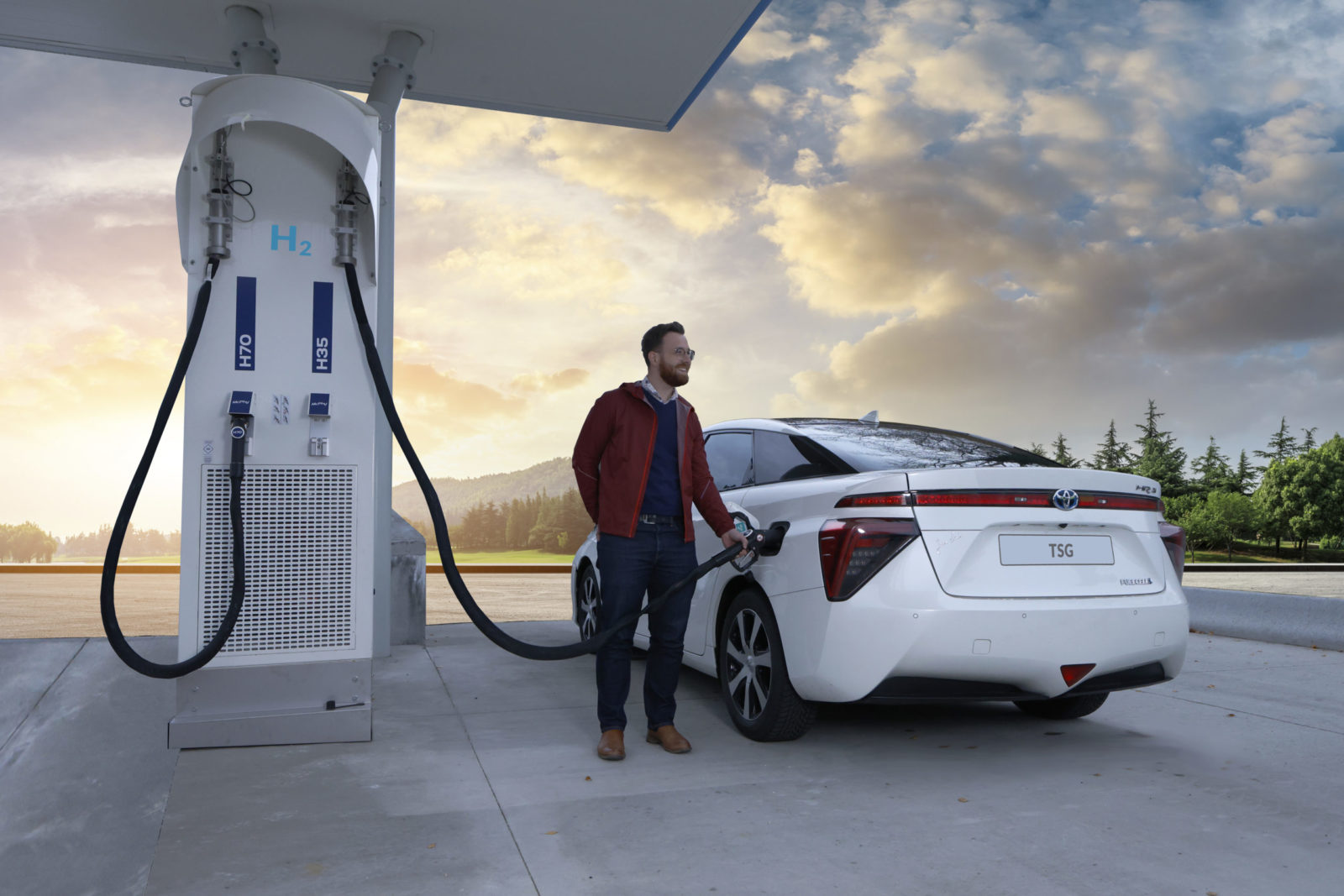
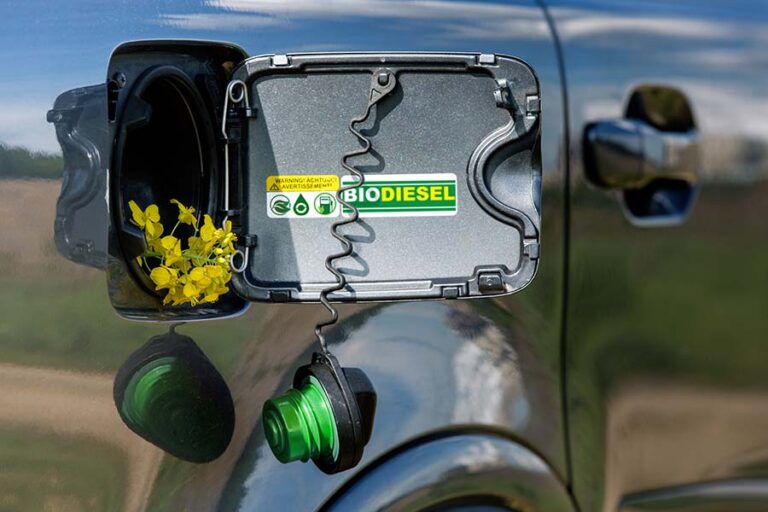
Biogas: Turning Waste into Clean Energy
Biogas is produced from organic waste, including food scraps, sewage, manure and agricultural residues. When purified, it becomes biomethane, which is chemically identical to fossil natural gas and compatible with existing infrastructure. Ireland’s National Biomethane Strategy※, published in May 2024, sets an ambitious target to produce up to 5.7 terawatt-hours (TWh) of biomethane annually by 2030, which could fuel thousands of HGVs or buses, depending on vehicle efficiency and usage.
※Source: Gov.ie
The strategy is driven by the agricultural sector, especially farmers, aiming to build 140–200 anaerobic digestion (AD) facilities nationwide. It aligns with Ireland’s biodiversity and circular economy goals, and includes a Biomethane Sustainability Charter to ensure environmentally responsible production.
Biomethane is already used in Ireland’s transport sector under the Renewable Transport Fuel Obligation‡. It offers a practical and scalable solution for municipal services and rural fleets, particularly where electrification is less feasible.
‡Source: National Oil Reserves Agency
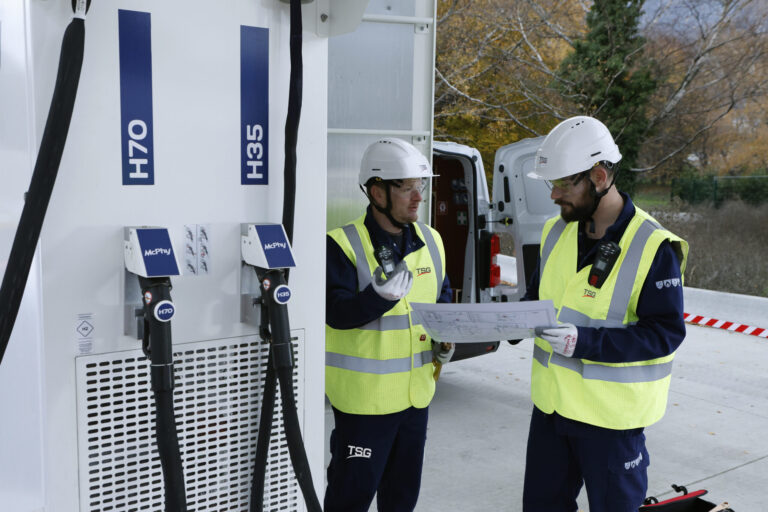
The Role of TSG Ireland
TSG Ireland is uniquely positioned to support the rollout of alternative gases. As a leading contractor for multi-energy infrastructure, TSG delivers turnkey solutions for hydrogen, biogas, LNG and electric charging. Its services span site assessment, design, installation, commissioning and maintenance, all delivered by Health, Safety, Security and Environment (HSSE) compliant teams.
TSG Ireland’s recent integration of IFES Electrical Services Ltd further strengthens its capabilities in electrical engineering and complex energy environments. This expansion supports the deployment of hydrogen and biogas infrastructure across forecourts, fleet depots and commercial sites.
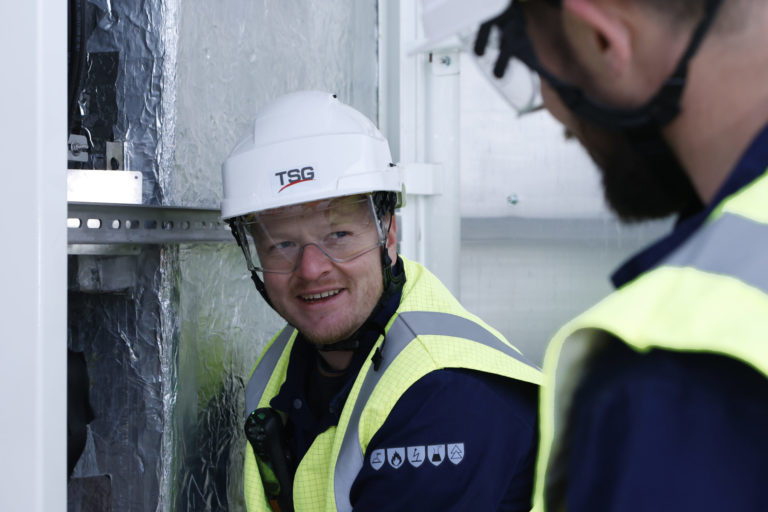
Looking Ahead
Ireland’s transport future will be multi-fuel. Electricity, hydrogen and biogas will coexist, each serving different segments of the market. EVs are expected to dominate urban mobility and passenger cars. Hydrogen may play a role in decarbonising long-haul logistics and high-demand fleets, particularly where operational requirements exceed battery capabilities. Biogas offers a sustainable solution for waste-based transport and rural services.
TSG Ireland is helping businesses navigate this transition by delivering the infrastructure, expertise and support needed to embrace cleaner fuels. As Ireland moves closer to its net-zero targets, the role of alternative gases will only grow in importance..
Summary: Key Takeaways
Hydrogen and biogas are essential components of Ireland’s net-zero transport strategy, complementing electricity in areas where batteries fall short.
Hydrogen offers long-range, fast-refuelling, zero-emission transport for certain HGV applications, supported by Ireland’s National Hydrogen Strategy and the SH2AMROCK Hydrogen Valley project.
Biogas turns waste into clean energy, with Ireland targeting 5.7 TWh of biomethane by 2030 through an agriculture-led strategy and new AD facilities.
TSG Ireland delivers tailored solutions for hydrogen and biogas infrastructure, offering dependable maintenance to support fleet operators throughout their energy transition.
The future of transport will be multi-fuel, with hydrogen, biogas and electricity working together to reduce emissions and improve energy resilience.
